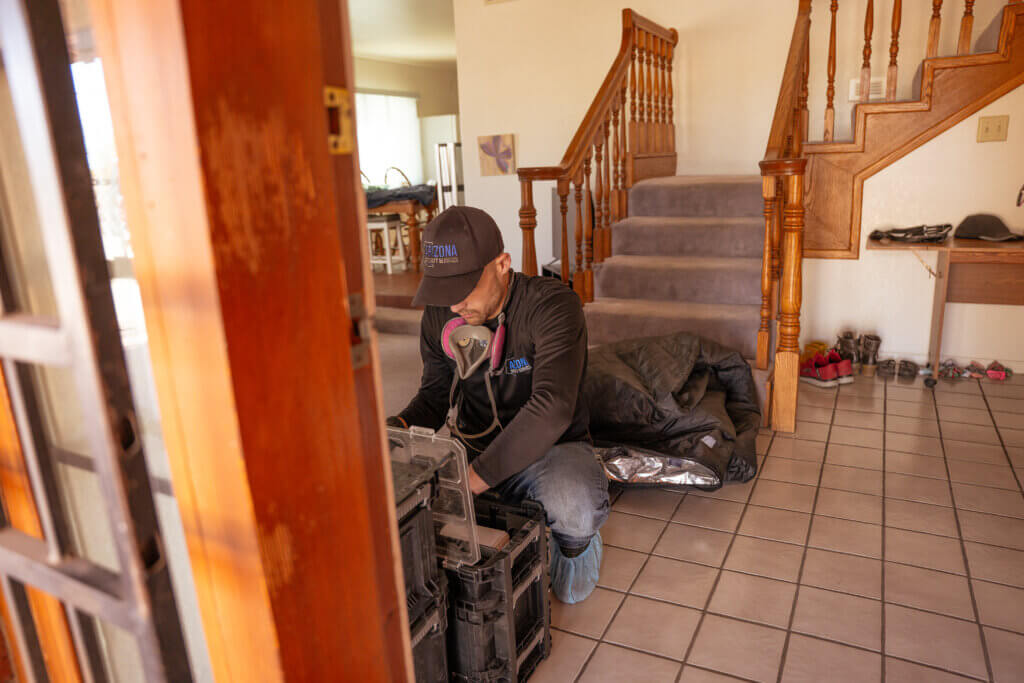Decluttering Your Space
The first step in preparing your home for bed bug treatment is to declutter and organize your space. Bed bugs can hide in the tiniest of spaces, and clutter provides them with the perfect hiding spots. By clearing unnecessary items and organizing your belongings in an easily accessible way, you ensure that pest control professionals can effectively treat all areas. Focus on clearing spaces such as closets, cabinets, under beds, and floors to allow for thorough access. For added protection, store items from these areas in sealed plastic bags to prevent any bed bugs from spreading to other parts of your home. Proper organization also helps identify additional potential hiding spots, making it easier to tackle the infestation head-on.
Linens and Clothes
Bedding, clothing, and linens are common areas where bed bugs tend to infest. To eliminate any living bed bugs or their eggs, it’s crucial to wash all washable fabrics in hot water and dry them on the highest heat setting. For items that can’t be machine-washed, such as shoes or stuffed animals, place them in the dryer on high heat for at least 30 minutes. Once all bedding, clothes, linens, and other items have been properly laundered, store them in sealed plastic bags to prevent any risk of reinfestation. It’s vital to keep these items isolated until the treatment is complete to ensure the effectiveness of the process.
Carpets and Furniture
After decluttering and laundering, the next crucial step is to vacuum your entire home thoroughly. This includes not just the floors, but also upholstered furniture and mattresses, with special attention to seams, folds, and small crevices. Using a vacuum with a HEPA filter is highly effective, as it traps bed bugs and their eggs. Once you’ve finished vacuuming, immediately empty the vacuum canister into a sealed bag and dispose of it in an outside trash bin. This will help eliminate a significant number of bed bugs and their eggs, setting the stage for a more successful treatment.
Avoid moving furniture during this process. Instead, inspect it thoroughly and vacuum any crevices. Keeping furniture in its original position helps prevent inadvertently spreading the infestation to areas that may not yet be affected.
Bedding and Mattresses
As bed bugs are most commonly found in sleeping areas, it’s essential to pay close attention to laundering all bedding, including sheets, pillowcases, pillows, and mattress covers, in hot water. Next, thoroughly inspect the mattress, box spring, and bed frame for signs of bed bugs, such as dark spots, shed skins, or egg casings. If necessary, encase the mattress and box spring in a bed bug-proof cover to trap any remaining pests, making it easier to treat the mattress and prevent further infestations. For the bed frame, carefully check all cracks and crevices for similar signs. Finally, clear out the area under the bed to ensure the technician can access all parts of the furniture for a thorough treatment. Remember to store any items under the bed in sealed bags or bins to prevent re-infestation.
Notify Property Manager
If you live in multi-family housing, bed bugs can spread quickly from one unit to another. It’s important to contact your property manager as soon as possible to report the infestation, allowing for immediate action to be taken. This will also help the property manager work with neighboring units to ensure the pests have not spread, making it easier to effectively eliminate the infestation.
Follow Professional Advice
Every bed bug infestation is unique, and each pest control service will provide tailored instructions for you to follow. By adhering to the guidance of professionals, you’ll help make the treatment process smoother and more effective. They may suggest additional preparations based on the specifics of your situation, and following their recommendations is crucial to ensuring the infestation is fully eradicated.
Post-Treatment Protocol
After your bed bug treatment is complete, it’s crucial to stay vigilant with post-treatment care to monitor any remaining pests. Regularly vacuuming, laundering bedding and clothing, and inspecting for signs of bed bugs will help identify any stragglers. Pest control professionals may also schedule a follow-up visit to ensure the infestation has been fully eradicated.
Maintaining a clutter-free environment and implementing preventative measures are key to avoiding future infestations. By following these steps, you can enhance the effectiveness of the treatment and have peace of mind knowing the job was done thoroughly.

